How and how to feed eggplants?
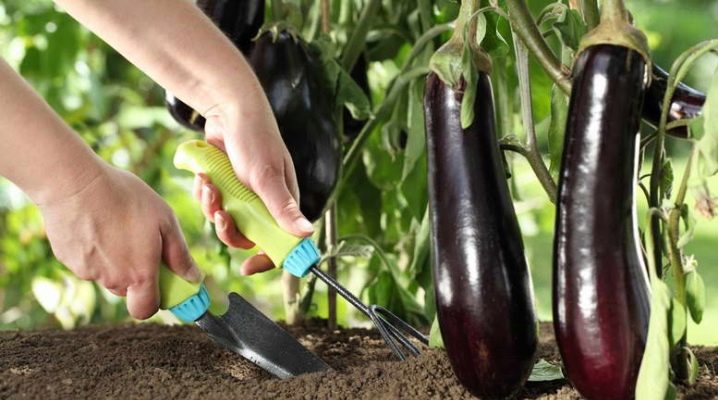
Eggplant is a rather demanding crop that needs regular feeding. Not only the health of plants, but also their yield depends on the choice of fertilizers and the timing of their application.
Fertilizer overview
Modern gardeners have a large selection of different fertilizers. The bushes can be fed with both purchased dressings and folk remedies.

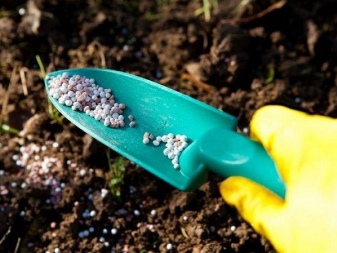
Mineral
Such fertilizers must be applied to the soil, strictly following the instructions on the package. You can feed eggplants with the following products.
- Ammonium nitrate... This top dressing quickly saturates the soil with nitrogen. Therefore, it must be used in the first half of summer. This fertilizer must not be mixed with urea. But it can be combined with phosphoric flour.
- Urea... This dressing is also nitrogen. Eggplant urea can be used dry. But most often dry granules are diluted in warm water before use. Do not mix urea with ash.
- Ammonium sulfate. Gardeners use this fertilizer for spring feeding of plants. It contains a large amount of nitrogen. Typically, such a product is added to manure solutions. This is done just before fertilizing the soil.
- Calcium nitrate... This product can be used during active eggplant flowering. It contains nitrogen and potassium. Therefore, the introduction of such feeding stimulates more active flowering of the bushes.
- Superphosphate... Feeding plants with superphosphate in a short time enriches the soil with phosphorus. But it is worth using such fertilizers only if the soil is not acidified.
- Potassium sulfate. This is one of the most popular potash dressings. You can feed the plants with sulfate at any time. The product goes well with nitrogen-containing dressings.
When working with such feedings, it is very important to adhere to the correct dosage. In this case, the plants will receive all the important nutrients without being affected.


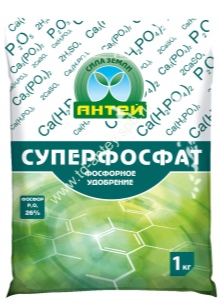
Organic
Such dressings are good because they have a positive effect not only on the growth and productivity of eggplants, but also on the condition of the soil on which they grow.
- Bird droppings. Most often, chicken droppings are used to feed eggplants. It contains a large amount of nutrients. A solution of chicken manure increases the immunity of plants, and also stimulates the ripening process of young eggplants. It is impossible to use a concentrated product for feeding. This will severely damage the roots of young plants. Before use, the dry product is diluted in warm water in a ratio of 1 to 20. The container with the solution is left in a warm place for several days.
Instead of fresh chicken droppings, growers can also use a pelleted product. You can buy it at most specialty stores. Dilute the dry granules in warm water following the instructions on the package. After that, the solution is immediately used for watering.

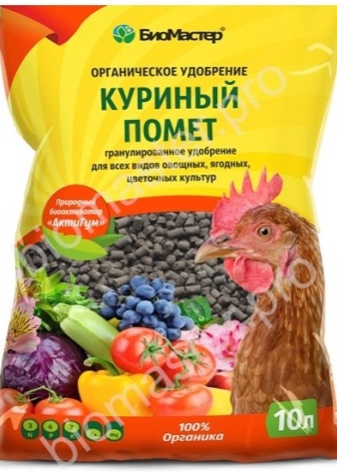
- Compost... Most gardeners are trying to equip a compost pit on their site. Weeds, foliage, plant and food residues can be stored there. Over the course of several months, the contents of such a pit slowly rot. The prepared compost can be used to feed many plants. Eggplants also love it. Usually, the compost is placed in the soil during the preparation of the site for planting seedlings.As a rule, well-rotted two-year-old compost is used for this purpose. Compost tea is also good for feeding plants. To prepare it, 3 liters of water and a small amount of any sweetener are placed in the compressor. Most often, sugar or syrup is used for this purpose. Add 70 grams of compost to the container with the solution. The compressor tubes are then placed in water. The aeration system is turned on for 12-20 hours.
Prepared compost tea should be used to water the plants immediately.
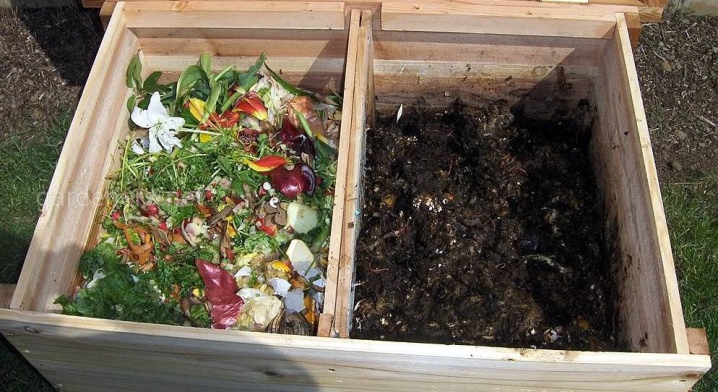
- Biohumus... This product has a lot in common with the previous one. The difference is that here vermicompost is used as a raw material that earthworms process. Vermicompost has a looser texture and stays in the soil longer.
The product is introduced into the soil during the digging process. It is recommended to do this every few years.
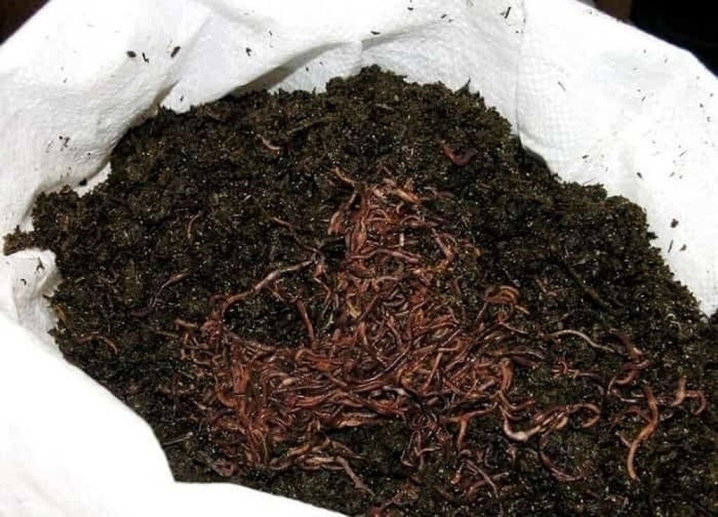
- Mullein... Eggplants, like other vegetable crops, cannot be fed with fresh manure. This product is too concentrated. The manure is diluted in warm water in a ratio of 1 to 10. The finished product is infused for a week. Some gardeners prefer to prepare a solution with manure and grass. They are mixed in equal proportions, and then poured with warm water.
Before use, such a solution is diluted in a ratio of 1 to 3. You can use this product for irrigation immediately after preparation.

- Green fertilizers... This product is usually used for feeding young plants. After its application, the bushes immediately turn green and grow. Usually, to prepare a useful infusion, young weeds are finely chopped and placed in a large barrel, and then filled with water. The products are mixed in a ratio of 1 to 2. The barrel is immediately covered with a lid and sent to a warm place. There the product begins to ferment. A week after preparation, the solution must be filtered and used as directed. Before use, the solution is usually diluted in water in a ratio of 1 to 10.
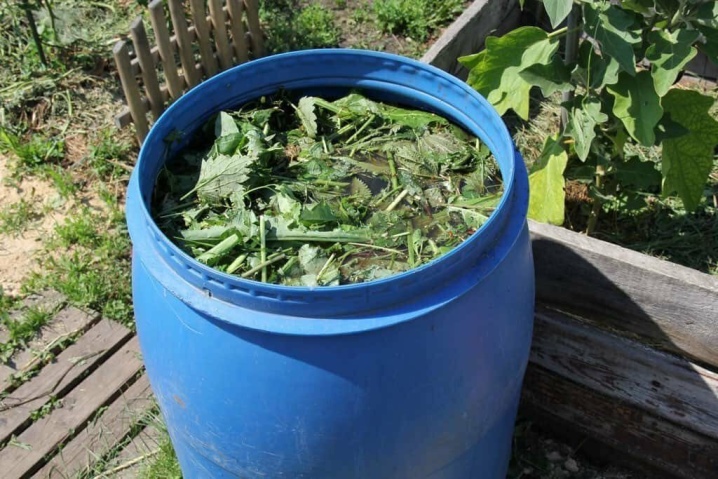
All these fertilizers are easy to prepare even for a beginner. Such a top dressing turns out to be budgetary and very useful for both healthy and weakened plants.
Complex
Suitable for feeding eggplants and complex products. They usually contain several trace elements at once. Such dressings are great for novice gardeners.
To fertilize plants, you can use any purchased fertilizing. The main thing is to do it carefully and always observe the dosage. An excess of nutrients is no less dangerous for plants than a lack of them.
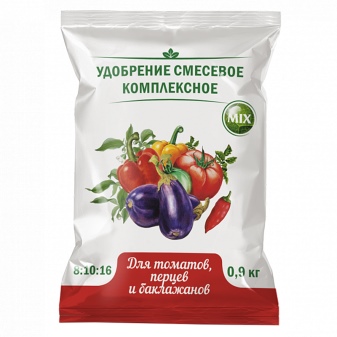
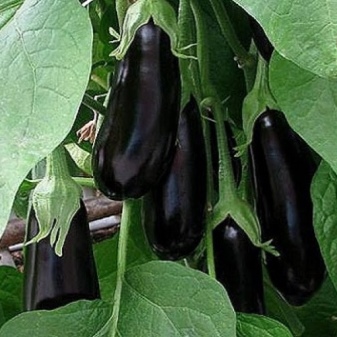
Folk remedies
Well suited for fertilizing eggplant beds and folk remedies. Novice gardeners should pay attention to the following products.
- Boric acid. This product can be purchased at any pharmacy. Fertilizing green plants with boric acid helps to increase the number of ovaries on the bushes, accelerate plant growth, and improve the taste of the fruit. To prepare a concentrated solution for treating a site, 10 grams of powder is diluted in ten liters of hot water. The product is then used to spray young plants.
- Ash... Pure ash contains a large amount of nutrients. The use of this product helps to improve the quality of the soil. In addition, ash protects plants from various pests and diseases. For feeding eggplants, a standard ash solution is usually used. To prepare it, half a kilogram of ash is diluted in a liter of warm water. Then add cold liquid to the container. At the end, the container should contain 10 liters of product. He needs to be sent to a warm place for a day. Before use, the infusion must be well filtered and used for foliar feeding. You can feed the plants with ash several times in three summer months.
- Ammonia... The use of ammonia promotes the rapid growth of green mass and flowers.To prepare a solution, 3 tablespoons of ammonia must be diluted in 10 liters of warm water. It is worth processing eggplants with such a solution immediately after its preparation. Top dressing with ammonia can also be used if the foliage begins to turn yellow or curl. It will help save plants and increase their yield.
- Iodine... This pharmaceutical product is usually used to treat young seedlings. The product accelerates the growth of eggplants, and also protects them from various diseases and dangerous insects. To prepare a solution, 2 drops of iodine are diluted in three liters of water. The finished product is poured under the roots of plants.
- Yeast... In work, you can use both fresh and dry or compressed yeast. Most often, a simple concentrated solution is used to feed plants. To prepare it, a kilogram of fresh raw yeast is diluted in five liters of heated water. The solution is insisted during the day. Before feeding, the liquid with yeast is diluted with water in a ratio of 1 to 10. During the preparation of the feeding, quite a bit of ash or crushed weeds is sometimes added to the container with the solution. It is worth feeding green bushes only if the weather outside is warm enough. It is best to use fertilizer in the evening. At this time, the soil is well warmed up.
- Bananas... Ordinary banana skins can be used to make a banana solution that is beneficial for young and adult plants. It perfectly saturates the soil with potassium. The skins of two bananas must be poured with three liters of water. A container with a banana peel should be sent to a warm place for several days. The solution must be well filtered before use. The product is used for root watering of young plants.
- Eggshell... This product is recommended to be used before planting seeds. To prepare the fertilizer, the dried shell must be crushed well. A third of a teaspoon of the product is placed in each well. Eggplants respond well to this fertilization.
- Onion peel... To prepare top dressing, you need to collect the husk of 2-3 large onions and pour it with a liter of boiling water. The container must be covered with a lid and left to infuse for two days. After that, the solution must be filtered and used for watering plants at the root.
If desired, mineral dressings can be combined with organic ones. This will only benefit the plants.

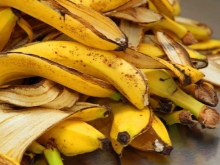
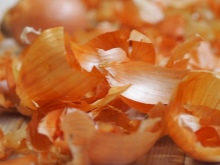
How to understand what the plant lacks?
Experienced gardeners can easily determine what the plants lack, focusing only on the appearance of their leaves. They are very sensitive in eggplants. The gardener should be alerted by the following points.
- Yellowness... If the leaves begin to turn yellow at the edges, and the eggplants themselves do not grow well and seem weak, most likely they do not have enough potassium for normal development. Timely feeding increases the immunity of plants and makes them more resistant to drought.
- Upward growth. If the foliage begins to actively stretch upward, and the flowers begin to fall off, then the plants need phosphorus. Timely use of phosphorus feeding will contribute to the rapid growth and strengthening of the ovaries, as well as the roots of eggplant.
- Pale foliage. If the leaves brighten and become lethargic, then the plant is experiencing a lack of nitrogen. Ovaries on such bushes form more slowly.
Learning to notice the signs of a lack of essential nutrients is easy. The main thing is to regularly inspect the eggplant beds and not leave them unattended.
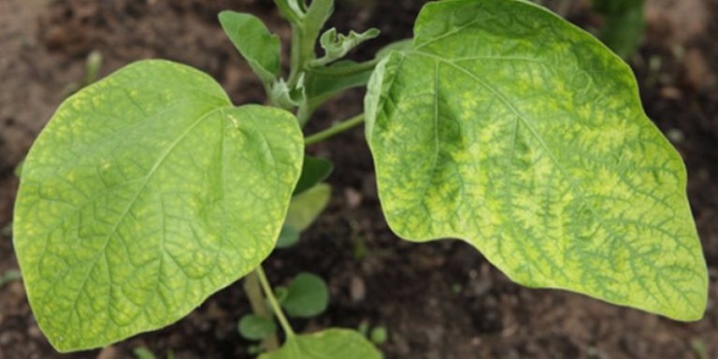
Application methods
Eggplant, like most garden and horticultural plants, is fed by the root or by leaf. Most often, gardeners carry out root feeding of plants. Liquid solutions are usually used for processing. In order not to burn the roots of eggplant, top dressing must be combined with watering. Using concentrated solutions intended for root dressing, do not allow drops to fall on the foliage.It is worth feeding plants in this way in the morning or late in the evening.
Foliar dressing is used if the eggplants need to be quickly revived. If done correctly, nutrients will reach the plant roots faster. Less concentrated solutions are used to spray the eggplant on the leaf. It is also recommended to process plants with such products in the evening. If the procedure is carried out during the day, you can accidentally burn the delicate foliage of the eggplant.
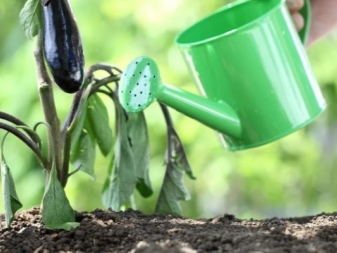

Feeding scheme
It is recommended to feed eggplants several times per season. This should be done according to a certain scheme.
For growth
The first step is to feed the young seedlings grown at home. Seedlings should be fertilized 14-18 days after the first shoots appear. It is best to use organic fertilizers for this purpose.
It is very important that they contain a large amount of nitrogen. The first feeding is important for the rapid growth and proper development of young seedlings.
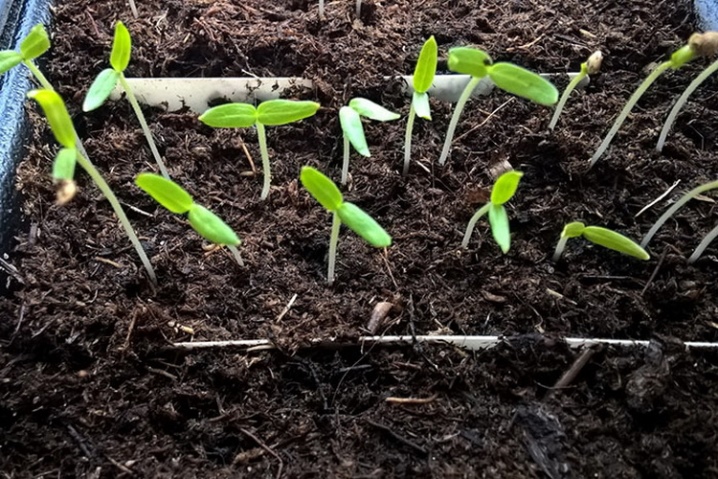
After the pick
The second feeding is also carried out in the spring. After the first true leaves appear on the seedlings, they must be dived. This usually happens 18-28 days after germination.
A week after the pick, the seedlings need to be well fed. For this, a solution of manure or urea is useful. Complex products are also used to feed plants at this stage. It can be "Kemira" or "Ideal".
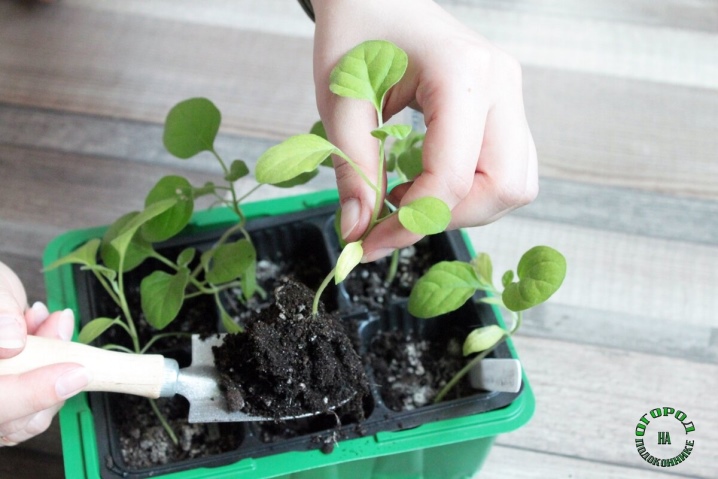
After disembarking
It is very important to feed the plant after planting in a new place. When growing eggplant outdoors, plants are fertilized several times per season.
- Before flowering. In June or May, after planting young plants in open ground, they must be fed. At this stage, nitrogen-containing agents are used. It is not worth feeding the plants earlier. Indeed, until the roots adapt to the new environment, they will be unable to absorb all the nutrients they need.
- During budding. Plants that bloom are recommended to be fed with organic fertilizers with potassium and phosphorus. The use of such products helps to increase the number of ovaries, and hence the yield of plants.
- During fruiting... To improve the taste of the fruit, you can use top dressing with potassium and phosphorus. This procedure will also help to extend the fruiting period of "blue".
You should not feed the plants more often than you should.
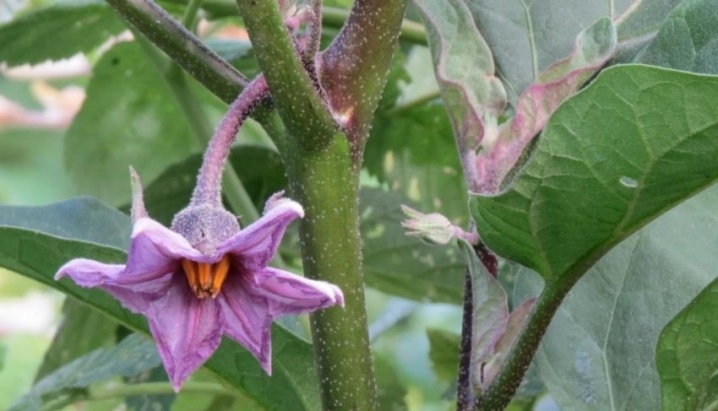
Useful Tips
Secrets of more experienced people will help novice gardeners grow healthy plants in their area.
- All fertilizers should be used in dosage. Even busy gardeners should not apply too much fertilizer to the soil at a time.
- If the soil on the site is poor, it is recommended to increase the number of procedures performed. But it is absolutely impossible to increase the concentration of the solution.
- Do not feed plants in hot weather. It will only hurt them. As a rule, feeding is postponed until the evening.
- When using chemical agents to treat the beds, you need to work with them in protective gloves.
If done correctly, young bushes will be healthy and strong, and the eggplant yield will be large.
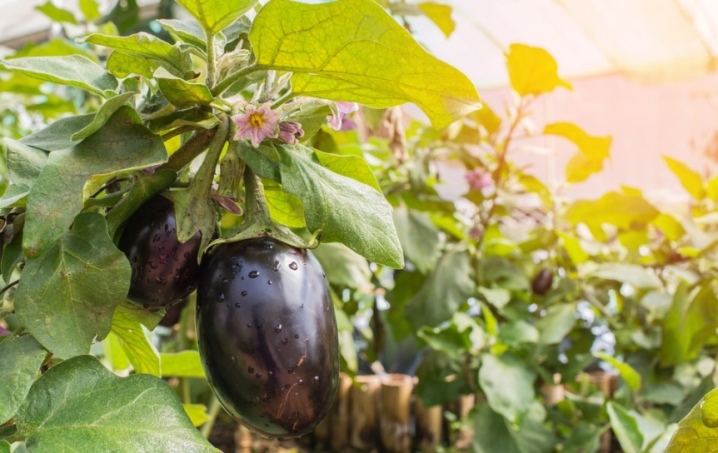






The comment was sent successfully.